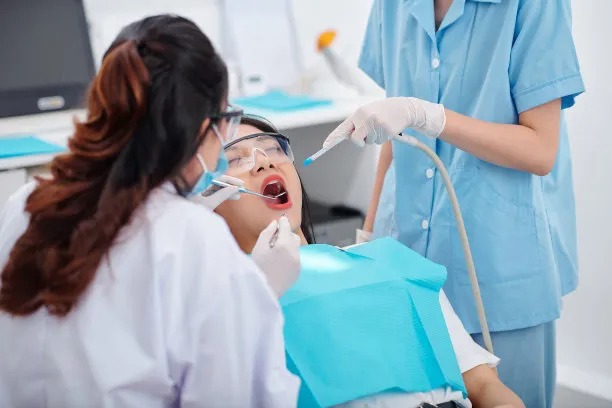Exploring the Latest Innovations in Dental Implants for Enhanced Oral Health and Aesthetic Restoration Solutions
Summary: The advancements in dental implants have transformed oral health and aesthetic restoration, offering patients enhanced function and visual appeal. This article delves into four key areas: the evolution of dental implant technology, the integration of biocompatible materials, the importance of digital technologies in treatment planning, and innovations in cosmetic procedures. Each section highlights how these innovations not only improve dental outcomes, but also raise patient satisfaction in aesthetic restoration, ultimately promoting better oral health and confidence.
1. Evolution of Dental Implant Technology

The realm of dental implants has undergone significant transformation since the first titanium implants were introduced. Initial designs were typically simple screws that lacked the innovation we see today. However, with continual research, modern implants feature advanced surface modifications that enhance osseointegration, ensuring a firm bond between the implant and jawbone.
Furthermore, the introduction of mini dental implants offers a viable solution for patients who may lack sufficient bone density. These smaller implants are designed to support single crowns and bridges effectively, allowing for less invasive procedures with quicker recovery times. They cater to a larger demographic, broadening access to restorative dentistry.
Today, implants can be customized for individual needs, thanks to computer-aided design (CAD). This customization ensures that each implant aligns perfectly with the patients anatomy, improving the overall success rate and patient satisfaction.
2. Biocompatible Materials in Implant Production
The materials used in dental implants are critical for their performance and patient acceptance. The trend towards biocompatibility ensures that the materials used, such as zirconia, can integrate seamlessly with human tissue without causing adverse reactions. Zirconia, in particular, is aesthetically pleasing and offers a metal-free alternative, reducing the likelihood of sensitivity.
In addition to zirconia, researchers are also exploring bioactive materials that promote healing. These materials encourage the growth of bone cells around the implant, enhancing stability and longevity. The incorporation of these advanced materials can also potentially lessen the risk of complications commonly associated with dental implants.
Moreover, manufacturers are developing alloys with improved corrosion resistance and strength, leading to longer-lasting implants. Such innovations not only increase the durability of the implants but also contribute to better long-term results in aesthetic restorations.
3. Importance of Digital Technologies in Dentistry
Digital technology is revolutionizing the field of dentistry, particularly in treatment planning for dental implants. With tools like Cone Beam Computed Tomography (CBCT), practitioners can visualize the jaw structure in 3D, facilitating better planning and placement of implants. This technology minimizes the margin of error during surgery, leading to higher success rates.
Additionally, the utilization of 3D printing is becoming a game-changer in the fabrication of custom dental implants and guides. This technology allows for rapid prototyping, giving dental professionals the ability to create precise models tailored to the patients unique anatomy before the actual surgery.
The integration of digital workflows not only enhances the surgical process but also improves communication between dental teams and patients. Virtual simulations help patients understand the procedure, reducing anxiety and increasing their involvement in treatment decisions.
4. Innovations in Cosmetic Dental Procedures
With the advent of advanced dental implants comes an array of innovative cosmetic procedures designed to enhance esthetics. Techniques such as grafting and sinus lifts allow for successful implant placement in cases of bone loss, ensuring that patients achieve their desired smile regardless of their bone structure.
Moreover, the use of advanced imaging technologies allows for precise color matching of implant materials with surrounding teeth. This attention to detail ensures that the implants not only function seamlessly but also blend beautifully with the natural dentition, striking a balance between function and aesthetics.
Innovative post-operative care techniques are also being developed, helping patients recover more swiftly with minimal discomfort, further enhancing the overall experience of dental restoration. This focus on patient-centered care is reshaping how dental professionals approach cosmetic enhancements.
Summary:
The innovations in dental implants represent a significant leap forward in both oral health and aesthetic restoration. From technological advancements in implant design to the integration of biocompatible materials and digital technologies, the field is evolving to meet patient needs more effectively. The ongoing focus on cosmetic procedures ensures that patients achieve both functionality and beauty in their dental restorations, ultimately boosting confidence and quality of life.
This article is compiled by Vickong Dental and the content is for reference only.



